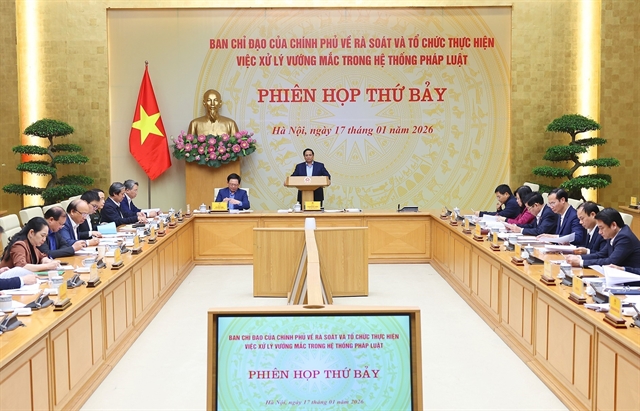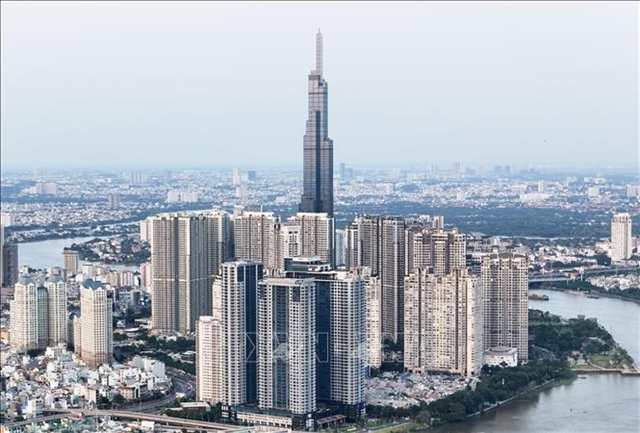 Opinion
Opinion

Unsustainable development is partly to blame for worsening natural disasters in Việt Nam, Hoàng Văn Thắng, Deputy Minister of Agriculture and Rural Development, said in an interview with Hải Quan (Customs) newspaper.
 |
| Hoàng Văn Thắng, deputy minister of Agriculture and Rural Development. — VNA/VNS Photo |
Unsustainable development is partly to blame for worsening natural disasters in Việt Nam, Hoàng Văn Thắng, Deputy Minister of Agriculture and Rural Development, said in an interview with Hải Quan (Customs) newspaper.
Why do you think Việt Nam has suffered so much from storms and typhoons lately?
With a huge network of rivers throughout the country, together with the fact that we lie at the mouths of the two big rivers in the continent, the Red River and the Mekong, natural disasters have become something of a norm for Vietnamese people.
The history of the Việt Nam is directly tied to the control of water flow, or fighting against drought and flooding. However, in recent times, natural disasters have undeniably become more complicated.
According to scientists, the impacts of climate change have increased the risks and intensity of natural disasters across the globe.
Many record-breaking storms have hit the American continent along with powerful floods, harsh cold spells or longer droughts as we have seen in the last decade in Việt Nam.
We now realise that unsustainable aspects of socio-economic development is one of the reasons contributing to the worsening situation and leading to the emergence of new types of disasters.
For example, the development of the Mekong upstream region with a number of reservoirs retaining large amount of silt and mud can be blamed for increasing erosion along riverbanks and coastal areas in the downstream region.
Over-exploitation of sand plus rampant deforestation has decapitated water-storage capacity, leading to more devastating floods and droughts.
These examples show that the mitigation of natural disasters must go hand in hand with climate change adaptability as well as better management of natural resources and the environment.
It’s a whole system that can be handled by a natural-disaster prevention authorities alone. If we don’t integrate all activities at all government levels, we won’t be able to offset the impacts of natural disasters.
How does the Ministry of Agriculture and Rural Development plan to allay future disasters?
Step by step the Government has been consolidating the institutional system on natural disaster responses. Under the 2013 Law on natural disaster prevention and control, plans appropriate to each region have been made, giving higher priority in terms of resources to areas at risk.
In just two years, 2016 and 2017, Việt Nam witnessed frequent forms of natural disasters, from floodings to typhoons. There were concerns about typhoons that strike regions rarely hit before, such as Khánh Hoà Province, and concerns about low pressure systems over the Mekong Delta, extreme floodings in the Red River Delta, as well as landslides and extreme cold spells in the north.
Our plan is to conduct a country-wide disaster response programme, but given the budget situation, we must prioritise certain areas.
While infrastructure development may not see drastic changes, the need to develop soft skills is critical. It can be done by improving responses of the public and local governments, promoting forecasting capacity as we slowly work towards a full picture of how to cope with natural disasters.
In recent times, typhoons over the southern region caused substantial damage, especially in coastal areas. Some say that the people in this region woefully lack skills to respond effectively. What do you think?
I agree with these opinions. The people in this region are particularly vulnerable to typhoons. The Government is now implementing Project 1002 on community-based natural-disaster management.
In recent times, we have mobilised resources, both domestic and international, to help improve response skills of the people living in thousands of communes.
However, following the extreme events that have occurred in the south-central coastal and northern mountain areas, the authorities need to be more committed in reviewing localities at elevated risks of natural disasters. — VNS




